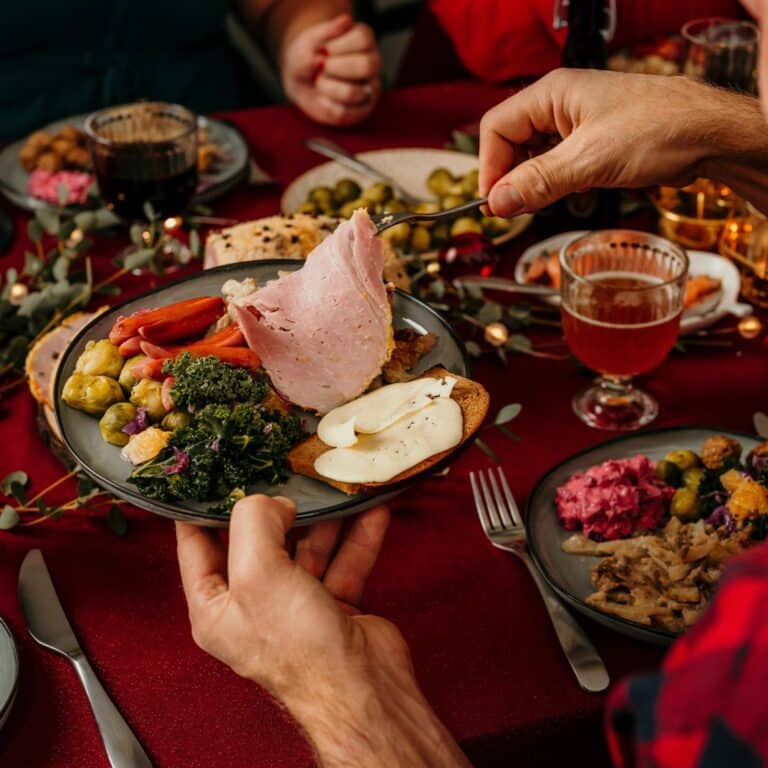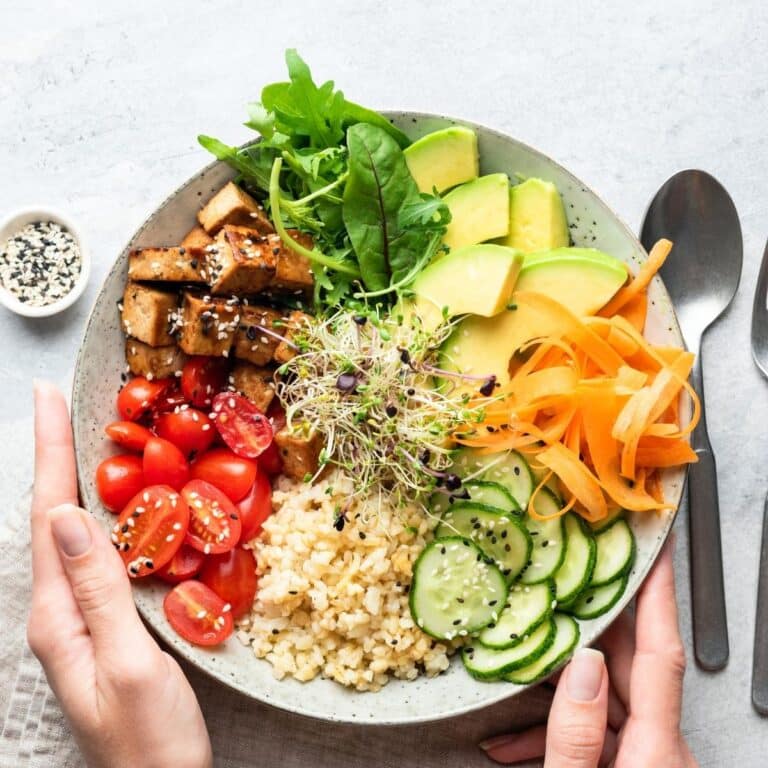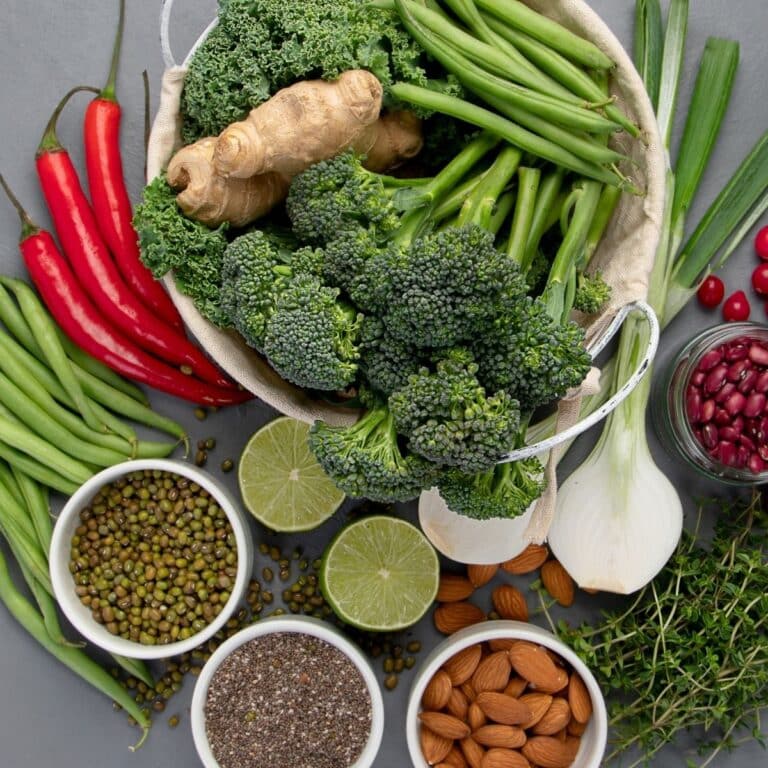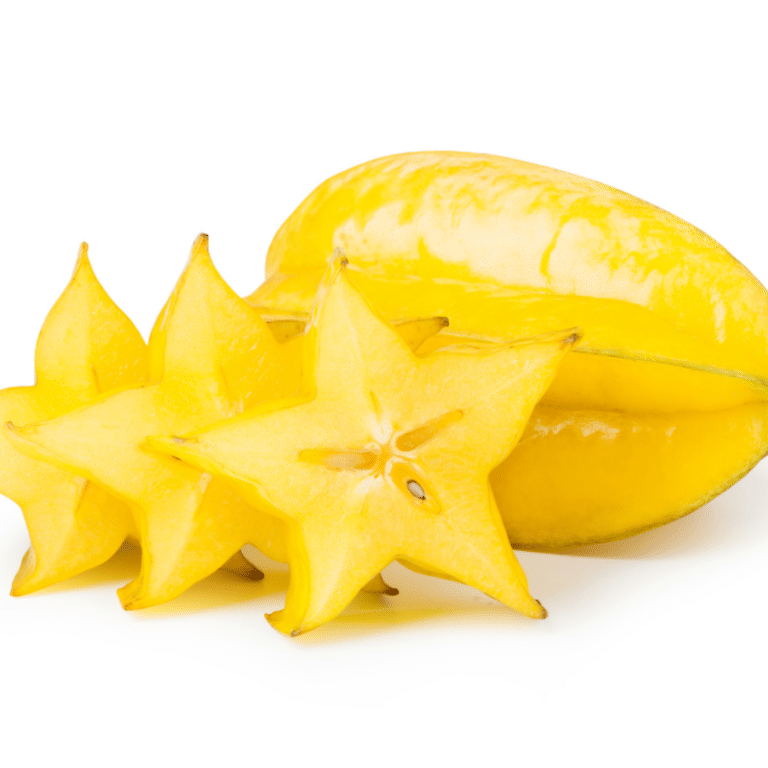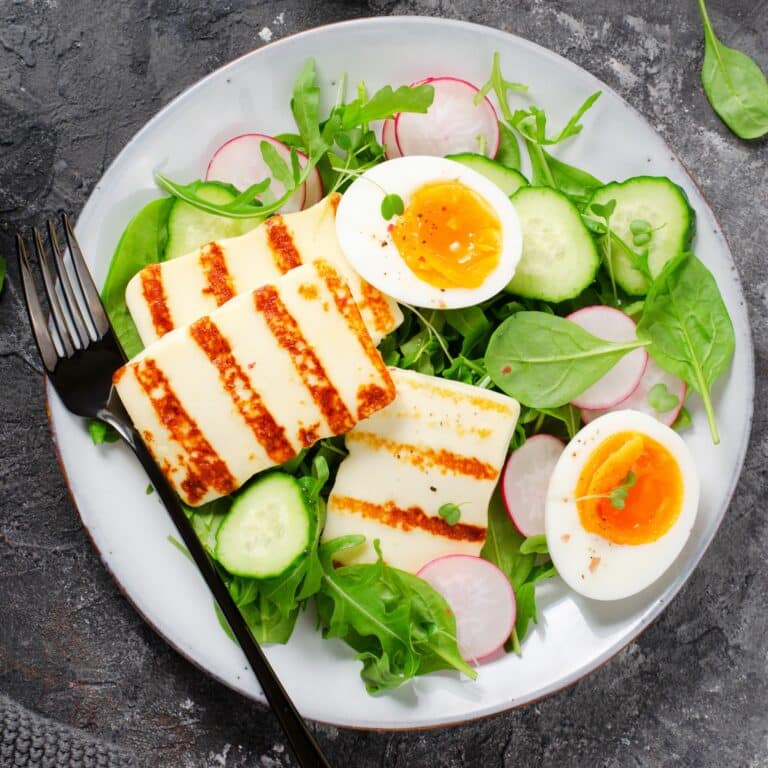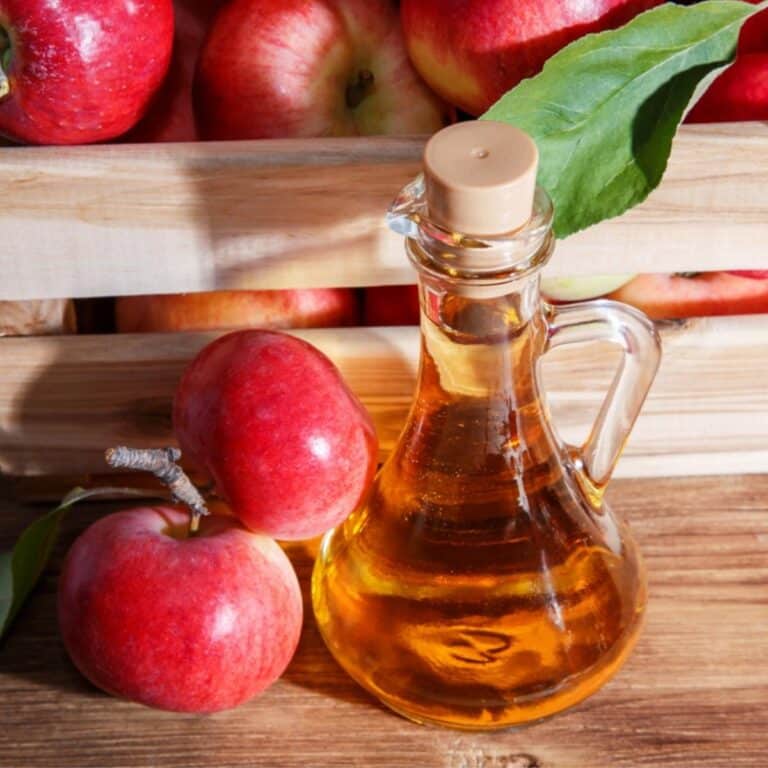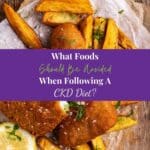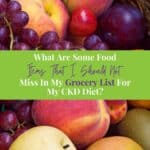CKD Grocery List
Eating a healthy diet is essential for people with chronic kidney disease (CKD). Meal planning and grocery shopping can be challenging, but it is important to make healthy food choices in order to protect your kidneys.
In this article, we will discuss the importance of creating a CKD-friendly grocery list and provide tips for building a healthy meal plan that meets your nutritional needs while still pleasing your palate. We'll also cover how online grocery shopping can help you stick to a kidney friendly food list and maintain a family-friendly kidney diet.
So let's get started!
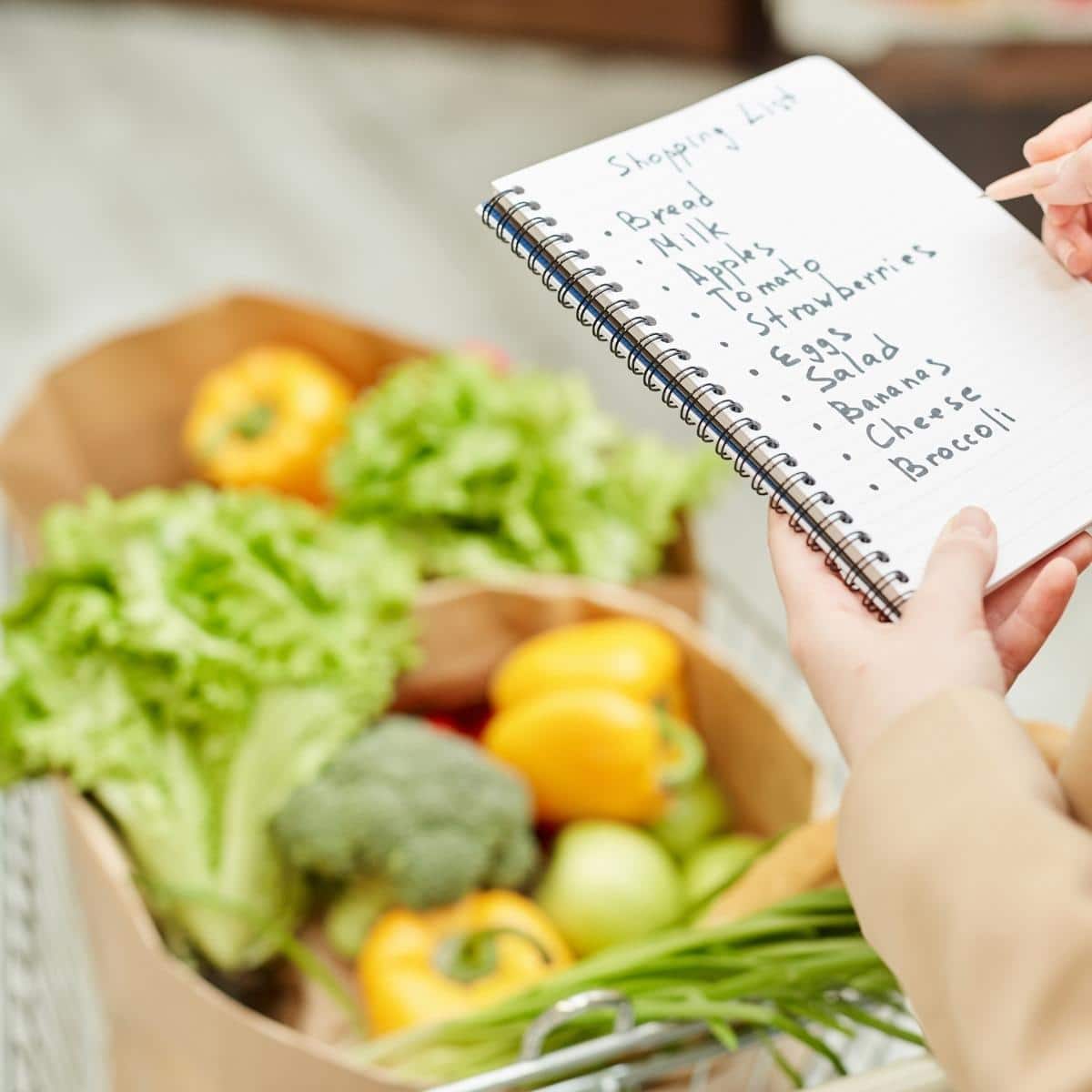
Jump to:
- Key Takeaways
- Renal Diet Essentials
- Understanding the Importance of Meal Planning in CKD
- The Role of Grocery Shopping in CKD Management
- Creating a CKD-Friendly Grocery List
- Avoiding Impulse Buys: Sticking to Your CKD Grocery List
- The Benefits of Online Grocery Shopping for CKD Patients
- Navigating the Grocery Store: Outer Aisles vs. Inner Aisles
- The Importance of Fresh Produce in a CKD Diet
- Exploring Local Farmers Markets for CKD-Friendly Foods
- Building a Healthy Meal Plan for CKD
- Tips for Shopping for Kidney Disease
- Low Sodium Choices: A Key Consideration for CKD Grocery Lists
- Maintaining a Family-Friendly Kidney Diet
- FAQs for Shopping for Kidney Disease
- Smart Grocery Shopping Is Essential If You’re On A Renal Diet
Key Takeaways
- Creating a CKD-friendly grocery list is essential for individuals with CKD.
- Shopping for CKD-friendly foods can be challenging, but reading nutrition labels and focusing on low sodium, potassium, phosphorus, protein, saturated fat, and cholesterol options can help.
- Meal planning and portion control are crucial in managing nutrition while living with CKD.
- Small adjustments to diet, such as using herbs and spices as substitutes for salt and incorporating frozen fruits and vegetables without added sauces or seasonings, can have significant impacts on health.
For More Recipes and Ideas --->> Get Your Free Meals and Recipes That Are Perfect for Pre-Dialysis Diets, Pre-Dialysis with Diabetes, or Dialysis Diets.
Renal Diet Essentials
A renal diet, also known as a kidney diet, is a specialized eating plan designed to support the overall health of individuals with chronic kidney disease. It focuses on managing the intake of certain nutrients, particularly protein, potassium, sodium, and phosphorus. Proper planning and grocery shopping play crucial roles in maintaining a balanced kidney diet.
Restricting amounts of protein consumed is a key aspect of a renal diet. High-protein options can increase the workload on the kidneys, leading to further kidney damage. It is suggested to consumed 0.55–0.60 grams of protein per kilogram per day.
Therefore, patients with CKD are often advised to limit their protein intake. Sources of protein like lean meats, poultry, fish, and eggs can still be included but in moderate portions. Plant-based proteins such as beans, lentils, and tofu are also good alternatives.
Controlling levels of potassium is also important because impaired kidneys may struggle to eliminate excess potassium from the body. Elevated potassium levels can disrupt the normal functioning of the heart and muscles. Hence CKD patients are often advised to adhere to a low potassium diet.
Foods high in potassium, such as bananas, oranges, tomatoes, potatoes, and beans, should be consumed in limited amounts. Instead, lower-potassium options like apples, berries, cucumbers, and rice can be chosen.
Sodium restriction helps control blood pressure and fluid balance. High sodium intake can lead to fluid retention and hypertension, which can further damage the kidneys. Processed foods, fast food, canned foods, and condiments often contain high levels of sodium and should be avoided. Instead, fresh fruits, vegetables, lean meats, and whole grains should be preferred.
One should also be careful of excess sodium additives in the form of sodium hexameta-phosphate, sodium tripolyphosphate, and tetrasodium pyrophosphate that may appear on food ingredients lists.
Phosphorus restriction is necessary because impaired kidneys may struggle to regulate phosphorus levels in the blood. Excessive phosphorus can weaken bones and contribute to cardiovascular complications. It is wise to be cautious of phosphorus additives as well.
Dairy products, nuts, seeds, whole grains, and processed foods are often high in phosphorus and should be limited. Foods with lower phosphorus content, such as rice, bread, apples, carrots, bean sprouts, and green beans, are better options.
Good planning when it comes to grocery shopping is essential for maintaining a balanced kidney diet. It allows individuals to select appropriate foods, control portion sizes, and avoid impulsive purchases.
Prioritizing fresh produce, lean proteins, and low-sodium and low-phosphorus alternatives is beneficial. Reading food labels for sodium and phosphorus content can also guide decision-making. Meal prepping can help ensure adherence to dietary guidelines and prevent reliance on convenience or processed foods.
A renal diet involves protein restriction, potassium, sodium, and phosphorus control. Planning grocery shopping effectively enables individuals with CKD to make informed choices, maintain a balanced kidney diet, and support their overall health and well-being.
Consulting with a registered dietitian who specializes in renal nutrition can provide personalized guidance and ensure optimal dietary management of chronic kidney disease.
Understanding the Importance of Meal Planning in CKD
Planning meals for CKD can be a huge challenge, but it's essential to managing the condition and staying healthy! Taking into account the individual's dietary restrictions and nutrient needs while still ensuring that meal planning is convenient and enjoyable are important considerations.
When creating a list of kidney friendly goods, look for foods that are low in sodium, potassium, phosphorus, protein, saturated fat, and cholesterol. Avoiding processed foods and fast food options is also recommended. Frozen fruits and vegetables without added sauces or seasonings can be great additions to a renal diet grocery list as they provide convenience without sacrificing nutrition.
Eating out should also be avoided when possible due to the lack of control over ingredients used in restaurant dishes. However, if it cannot be avoided, make sure to research food menu information offered by the restaurants or let your servers know that you have special dietary accommodations.
When shopping for groceries with CKD in mind, portion control is key. It's important not to buy too much food at once as this can lead to waste or overeating which could have negative health consequences.
Cost considerations are also an important factor when choosing foods; fresh produce may cost more than pre-packaged items but will typically offer more nutritional value than processed foods.
To reduce costs without compromising nutrition, it is usually safe to buy canned or frozen fruits instead of fresh ones - most canned fruit does not contain added sugar so it can make a great snack option if portioned correctly!
Additionally, look into making recipe substitutions such as using whole wheat pasta instead of white pasta or opting for leaner cuts of meat like chicken breast instead of red meat.
Meal planning may seem daunting at first but by focusing on nutritious ingredients that fit within your dietary restrictions, you'll soon find yourself creating delicious meals that everyone in your family will enjoy! Don't forget about snacks either: many nuts and seeds provide plenty of nutrition without being overly high in sodium or other nutrients you need to limit with CKD.
With some creativity and careful consideration, you'll be able to create an ideal renal diet grocery list tailored specifically towards your own health needs! No matter what stage of kidney disease you're in, being aware of how to prepare your list of foods for shopping can help support your diet.
The Role of Grocery Shopping in CKD Management
Maintaining a healthy diet that is appropriate for kidney disease comes down to effective meal planning and grocery shopping. Most people go to the grocery store and just choose items that they think look good and that is how they plan their menu for the week. For people with chronic health issues like kidney disease, you need a bit more planning and an effective grocery store strategy.
Strategizing a trip to the grocery store might sound like overkill to you know, but you will come to understand how effective shopping for kidney disease can not only ensure healthier groceries, but it can also help save you time and money.
Knowing what part of the store holds the healthiest groceries and what places you go to to get the best items that are appropriate for your diet are how you grocery shop to suit your health situation.
The first step in grocery shopping for CKD is to plan out what meals you want to make throughout the week. This allows you to determine exactly what ingredients you need in your shopping list so that you don't buy too much or too little.
Knowing which items are good for CKD is also important when planning meals and going through the grocery store aisles. For example, whole grain breads provide complex carbohydrates compared with white breads which contain simple carbohydrates, however, they also tend to contain more phosphorus. Be sure that you are guided by a healthcare provider such as a renal dietitian to decide these matters.
Grocery shopping requires some thoughtfulness but doesn't have to be a chore if done correctly! By understanding how different foods affect your health and nutrition goals - such as controlling blood glucose levels or maintaining a healthy weight – you can create a personalized meal plan that best suits your lifestyle and helps manage CKD symptoms.
So, get creative and enjoy your next trip to the grocery store!
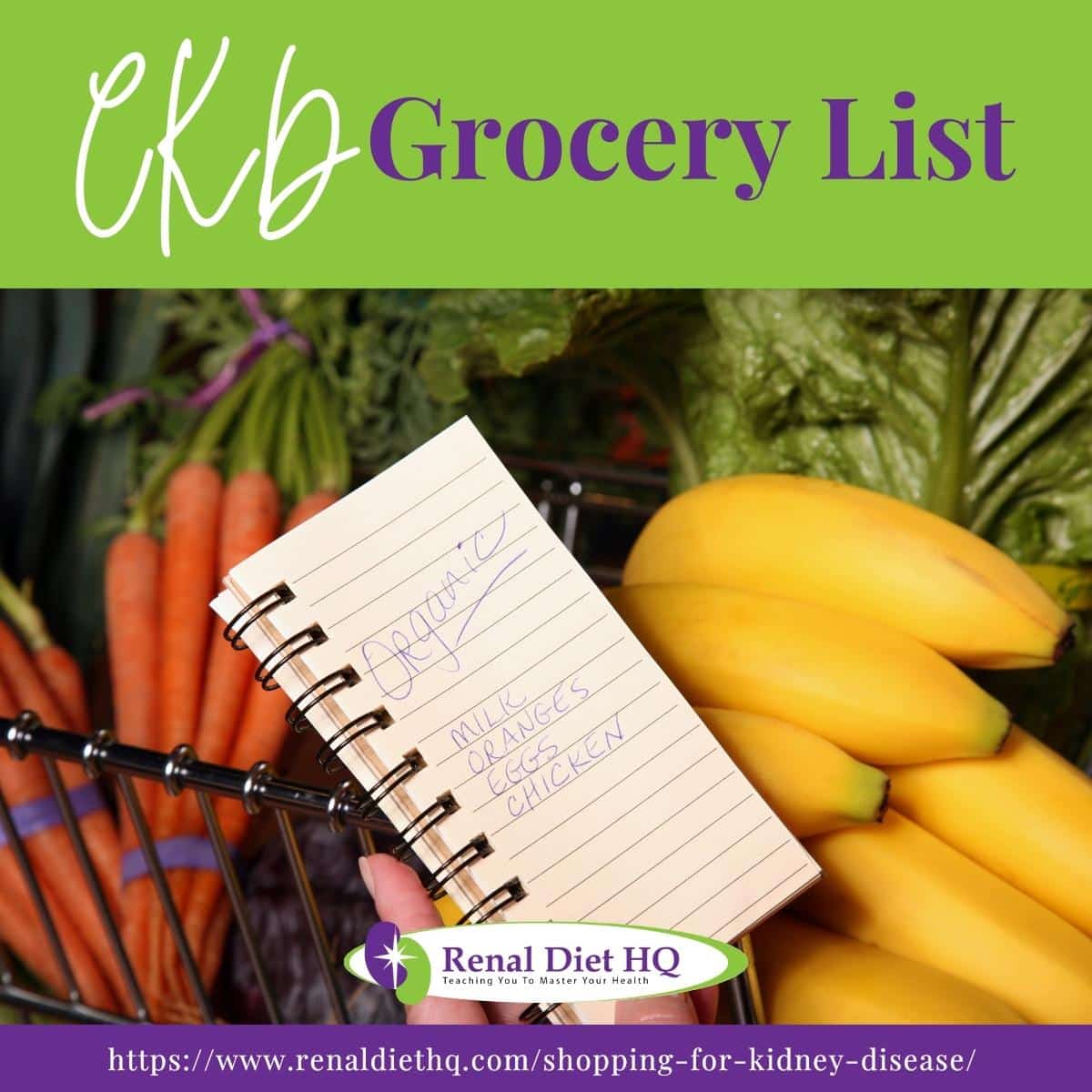
Creating a CKD-Friendly Grocery List
Creating a personalized renal diet grocery list that's tailored to your dietary needs and health goals can make shopping trips fun and stress-free! Whether you've recently been diagnosed with chronic kidney disease or are managing advanced kidney disease for years, understanding what foods are best for maintaining kidney health should be at the top of your list.
Reading nutrition labels on food packaging will help you determine which items contain high levels of sodium, sugar, and other important nutrients. Be sure to practice portion control when selecting items such as canned goods, pre-packaged snacks, and frozen meals. Additionally, it's wise to choose fresh fruits and vegetables for snacking options throughout the day.
When creating your grocery list for CKD management, focus on ingredients that are low in potassium and phosphorus. It's also beneficial to select dry foods that can be stored easily like nuts, seeds, oats, quinoa, etc. so you can have easy access when meal planning or craving a snack.
You may want to consider incorporating some simple kidney-friendly recipes into your meal plan such as grilled chicken with steamed vegetables or baked salmon served over a bed of wild rice.
Grocery shopping can be an enjoyable experience if you take the time to plan ahead according to your dietary needs and health goals. Making smart choices while reading nutrition labels and stocking up on nutrient-dense foods will go a long way when it comes to maintaining optimal kidney function!
Avoiding Impulse Buys: Sticking to Your CKD Grocery List
Sticking to your personalized dietary needs and health goals while grocery shopping can help you avoid costly impulse buys! To do so, it's important to stock up on the staples that you need for a healthy CKD diet.
Here are a few things to keep in mind:
Plan It Out
First of all, every effective meal plan and grocery shopping trip starts with a little organization and planning. You should put a healthy meal plan together based on healthy recipes that you want to eat each day. Make a list of the items you plan to eat for each meal as well as the ingredients you need to make these meals, including snacks. Based on that list, make your grocery list (Comprehensive Healthy Renal Diet Grocery List Guide).
Don't Stray
Do not stray from your list when you shop and avoid impulse buys at all costs. This will help you avoid unhealthy buys and save you money. One way to avoid impulse buying is to grocery shop online which can make it less satisfying to put unhealthy items in your cart.
You also have the benefit of being able to fully analyze your cart and easily remove impulse items before you checkout. If you plan on using any online savings schemes such as Target coupons, remember not to stray from your list, as it can be very easy to buy more than you need to take advantage of such a deal.
Another way to avoid impulse buys is to never go grocery shopping hungry. If you are hungry you are more likely to make impulse buys, specifically snack items that aren't good for you or your kidney disease (Diet Changes by Stage of Chronic Kidney Disease).
Stick To The Outer Aisles
In almost every grocery store, the outer aisles are where you will find the healthiest grocery items. The produce section, of course, is where you should be finding most of your groceries. In most grocery stores, the "health food" section is in the aisles nearest to the fresh foods section, and this is where you will find more unprocessed food items.
Meat and dairy items are also typically on the outer aisles, so you should be able to avoid the inner aisles. If you do find the need to venture into these aisles, try not to browse and only go for what is on your list. All of those easy processed foods are hard to turn down in a pinch (processed foods and CKD).
Market Fresh
One of the best places to grocery shop is at your local farmer's market. Not only will you find the freshest and most delicious produce there, but you will help your local economy. You will also likely save a lot of money because most farmer's markets are cheaper than the produce section in your favorite grocery stores.
The Benefits of Online Grocery Shopping for CKD Patients
Finding the perfect balance between convenience and nutrition can be challenging for CKD patients, but online grocery shopping offers a great solution. With the tap of a few buttons, CKD patients can access their favorite groceries without leaving home.
Shopping apps like AmazonFresh or Instacart allow users to search specific items or browse entire stores in order to compare prices and find the best deal on quality products. Home delivery is also available with some services so that those with limited mobility can still reap the benefits of online grocery shopping.
Online grocery stores make it easier to control portion sizes and stay within nutritional guidelines by providing detailed nutritional information about each product. Price comparison tools help shoppers stick to their budget while ensuring they are buying healthy foods that fit into their meal plan.
CKD patients no longer need to worry about long lines and navigating crowded store aisles; online grocery shopping provides all the same benefits as traditional options with added convenience.
From price comparison tools and detailed nutritional information to home delivery services and helpful apps, online grocery shopping offers plenty of advantages for CKD patients looking for an easy way to manage their diet while staying safe at home.
Navigating the Grocery Store: Outer Aisles vs. Inner Aisles
You can make the most of your grocery shopping trip by taking advantage of the differences between outer aisles and inner aisles. Outer aisles tend to contain more fresh, unprocessed foods such as fruits, vegetables, and lean proteins like seafood or poultry.
Inner aisles are often stocked with pre-packaged convenience items like frozen meals, condiments, canned goods, and cereals. Both areas have their advantages for CKD patients:
Outer Aisle Benefits:
- Reading nutrition facts labels (read labels carefully as a kidney patient) is key to understanding what you're buying and making healthy choices. Unprocessed items on the outer aisle don't come with nutrition labels so they're easier to identify as healthier options.
- The produce section offers many salt substitutes that can be used in cooking instead of table salt. This can help reduce sodium intake significantly without sacrificing flavor.
- Buying produce from the outer aisle means you get to decide portion sizes which gives you greater control over calorie consumption as well as added convenience since no additional preparation is needed when it comes time to eat them.
Inner Aisle Benefits:
- Pre-made meals offer quick dinner solutions if you're short on time but still want something nutritious that fits within your dietary restrictions for CKD management.
- Canned vegetables and fruits provide easy access to healthy snacks even during busy times when there isn't enough time for meal prep or baking from scratch.
- Low sodium alternatives like reduced-salt broths can replace regular broths if lower sodium content is desired while still providing flavor in recipes or soups without having to substitute ingredients too much or sacrifice taste entirely.
Both sections of the grocery store have their uses depending on what kind of meal planning needs arise throughout the week, giving CKD patients more kidney-friendly options to meet their health needs without compromising flavor or convenience at mealtimes.
The Importance of Fresh Produce in a CKD Diet
Now that you know what to look for when navigating the grocery store, it's important to focus on the importance of fresh produce in a CKD diet. Eating fresh fruits and vegetables can help manage potassium levels and portion control.
When selecting produce, it is recommended to look for food labels and read them carefully. Focus on the serving size listed on the label and note how much potassium is contained in each serving size. This will help you determine which foods are safe to consume within your 7 day meal plan for chronic kidney disease.
As potassium is one of the nutrients that people with kidney disease must watch out for, here is a table outlining the amounts of potassium in selected produce:
| Food & Serving Size | Potassium (mg) |
| Strawberries, 1 cup (152g) | 54 mg |
| Apple, 1 large (242g) | 195 mg |
| Broccoli, ½ cup cooked (78g) | 42 mg |
| Banana, 1 medium (118g) | 422 mg |
By understanding your dietary needs through label reading and food swaps, you can ensure that your meals contain enough essential nutrients while controlling your potassium levels. With this knowledge, you can easily pick out the best healthy options when it comes to fresh produce for your renal diet!
Exploring Local Farmers Markets for CKD-Friendly Foods
Shopping from local farmer markets can offer numerous benefits for patients with chronic kidney disease (CKD) who are following a renal diet.
Here are some advantages of choosing farmer markets for CKD-friendly foods:
- Freshness and Quality: Farmer markets often offer fresh, locally sourced produce. Fresh fruits and vegetables are rich in essential nutrients and lower in sodium and phosphorus compared to processed or canned alternatives. The quality and flavor of freshly harvested produce can greatly enhance the taste and enjoyment of meals.
- Seasonal Variety: Farmer markets showcase a wide range of seasonal produce. Eating a variety of fruits and vegetables ensures a diverse nutrient intake while adding culinary excitement. Local farmers can provide guidance on the best produce options for CKD patients, ensuring they choose items that are low in potassium and phosphorus.
- Organic and Pesticide-Free Options: Many farmer markets prioritize organic farming practices, offering a selection of pesticide-free and sustainably grown produce. Organic foods can reduce exposure to potentially harmful chemicals, which is particularly important for individuals with CKD who need to minimize toxin buildup in their bodies.
- Community Support: Shopping at farmer markets supports local farmers and the community. It promotes sustainable agriculture and helps strengthen the local economy. Engaging with farmers and other shoppers can create a sense of belonging and connection, fostering a supportive environment for individuals managing CKD.
- Access to Specialty Foods: Farmer markets often feature unique and specialty items that may be beneficial for CKD patients. These can include low-sodium sauces, herbal teas, low-phosphorus baked goods, and other homemade products that cater specifically to dietary restrictions.
- Education and Awareness: Farmer markets offer an opportunity for individuals to learn more about the food they consume. Farmers and vendors are often knowledgeable about their products and can provide valuable insights into nutritional content, cooking techniques, and recipe ideas that align with a renal diet.
By shopping at local farmer markets, CKD patients can access fresh, seasonal, and nutrient-dense foods that align with their dietary needs. The direct connection with local farmers and the community enhances the overall experience and contributes to a healthier, more sustainable lifestyle.
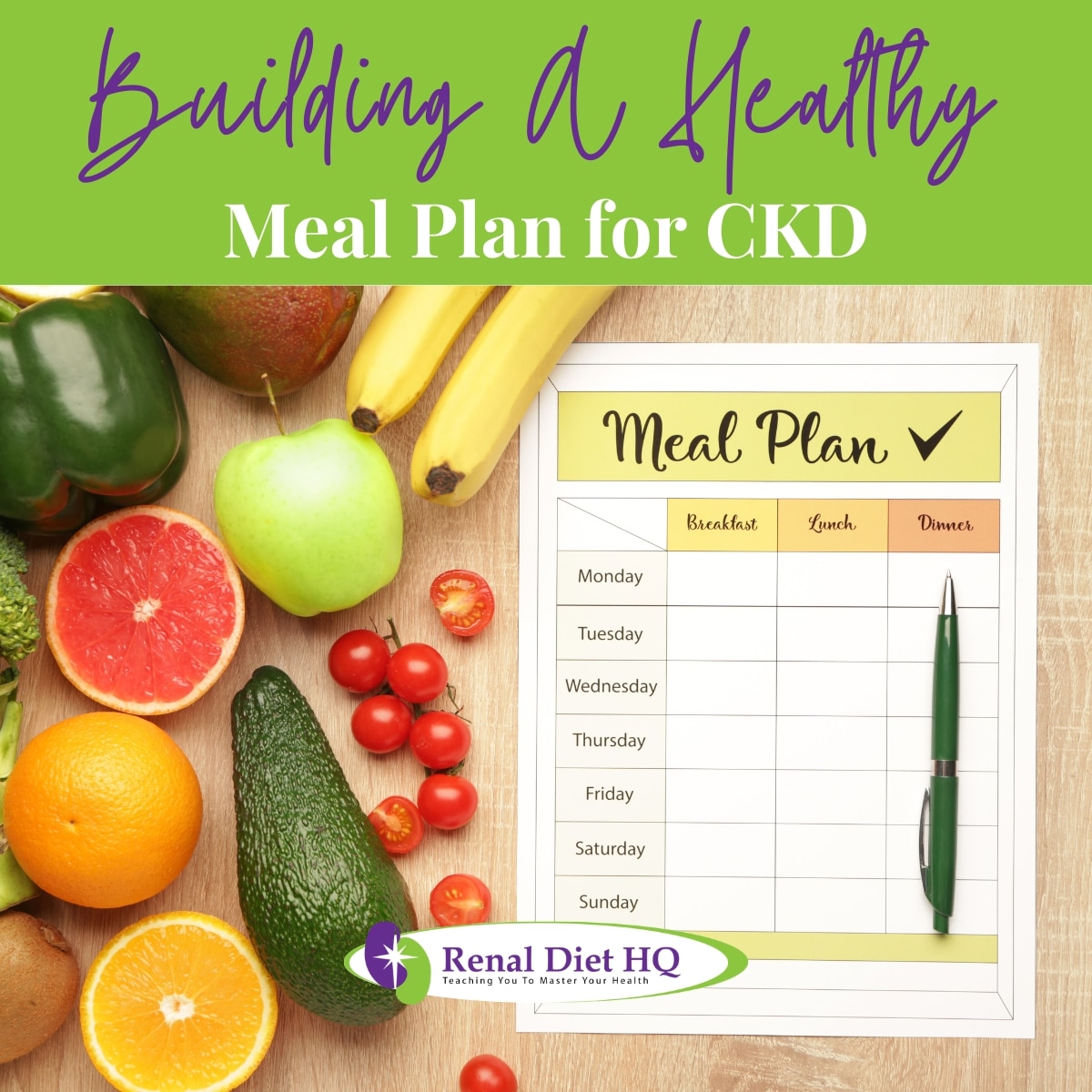
Building a Healthy Meal Plan for CKD
Creating a healthy meal plan for people with CKD doesn't have to be difficult, you just need to know where to start! Meal planning is an important part of managing the dietary needs associated with CKD.
Preparing meals ahead of time can help you reach your nutritional goals and make sure you're getting the necessary vitamins and minerals without exceeding sodium intake guidelines.
Creating a healthy meal plan for a CKD patient on a renal diet involves several key steps:
- Consult with a healthcare professional: It's crucial to consult with a registered dietitian or healthcare professional who specializes in renal nutrition. They can assess the patient's individual needs, medical history, and lab results to provide personalized dietary recommendations.
- Understand dietary restrictions: Gain a thorough understanding of the dietary restrictions associated with CKD, including protein, sodium, potassium, and phosphorus restrictions. This knowledge forms the foundation of the meal plan.
- Plan balanced meals: Design meals that incorporate a balance of nutrients while adhering to the recommended restrictions. Include adequate high-quality protein sources such as lean meats, poultry, fish, and eggs, while controlling portion sizes to limit protein intake. Choose low-potassium fruits and vegetables and limit high-potassium foods like bananas, oranges, tomatoes, and potatoes. Similarly, control sodium intake by avoiding processed foods and using herbs and spices for flavoring instead.
- Monitor phosphorus intake: Restrict phosphorus intake by choosing low-phosphorus foods like rice, bread, and pasta over higher-phosphorus alternatives like whole grains and dairy products. Limiting portion sizes of high-phosphorus foods is also essential.
- Consider fluid restrictions: In advanced stages of CKD, fluid intake may need to be restricted. Take into account the recommended fluid allowance when planning meals and beverages.
- Incorporate variety and taste: Make the meal plan enjoyable by including a variety of flavors, textures, and colors. Experiment with herbs, spices, and low-sodium seasoning blends to enhance taste without relying on salt. Explore different cooking methods like grilling, baking, or steaming to add variety to meals.
- Monitor and adjust: Regularly monitor the patient's lab results and consult with the healthcare professional to assess the effectiveness of the meal plan. Adjustments may be necessary based on individual needs and changing health conditions.
By following these steps and working closely with a healthcare professional, a CKD patient can develop a personalized, healthy meal plan that supports kidney function and overall well-being.
Tips for Shopping for Kidney Disease
Shopping for and preparing meals with kidney disease can be tricky, but there are tips to help you make smart decisions at the grocery store. First, menu planning is a great way to ensure that you're getting all of the nutrients your body needs while limiting foods that may cause harm.
Before going to the store, plan a week's worth of meals ahead of time, so you know exactly what ingredients you need. Secondly, portion control is key when managing CKD. Make sure to balance your plate with half non-starchy vegetables, one quarter proteins (alternative proteins such as fish or tofu are recommended) and one quarter carbohydrates such as whole grains or legumes.
Lastly, when shopping for beverages look out for ones that are low in sugar and sodium; label reading is also essential when it comes to avoiding unwanted additives in processed food products.
Stay away dark-colored sodas, certain diet sodas, and cream sodas as they not only raise blood sugar levels, may also contain phosphoric acid additives that can raise phosphorus levels.
| Tips | Description |
| Menu Planning | Plan weekly meals before shopping |
| Portion Control | Balance plate with non-starchy vegetables, proteins & carbs |
| Alternative Proteins | Try fish or tofu instead of red meat/poultry |
| Hydration Strategies | Aim for 8 glasses water/day; avoid sugary drinks & high sodium foods |
| Label Reading | Check labels on processed foods for unwanted additives & preservatives |
It can be overwhelming navigating grocery stores nowadays due to the wide variety of options available, try sticking with whole foods such as fresh fruits and veggies which don't require label reading!
Remember: eating healthy doesn't have to be complicated. With these simple tips in mind you will soon find yourself making smart choices at the grocery store while still enjoying delicious meals!
Low Sodium Choices: A Key Consideration for CKD Grocery Lists
When managing a chronic condition like CKD, it's important to consider low sodium choices when preparing meals. Knowing which foods contain the least amount of salt is a critical part of any grocery list for people with kidney disease.
Eating out can be difficult, as many restaurants add large amounts of salt to their dishes. To ensure you're making the healthiest decisions possible, always read nutrition labels prior to purchasing pre-made meals or snacks. Portion control also plays an important role in regulating your sodium intake; make sure that you're not eating too much food at one time.
Eating a balanced diet is also essential for overall health and wellness; choose fresh fruits and vegetables whenever possible, and stay away from processed meats and other high-sodium items like canned soup or frozen dinners.
Small adjustments to your diet can have big impacts on your health, so take some time each week to plan out healthy meals that are low in sodium content!
Maintaining a Family-Friendly Kidney Diet
Maintaining a kidney-friendly diet with family members in mind can be challenging, but it doesn't have to be difficult. The key is to make small adjustments while still providing delicious and nutritious meals for everyone.
Portion control, sodium substitutes, cooking techniques, grocery budgeting, and meal prepping are all helpful strategies that can help you create meals that are tailored to the needs of those with CKD.
For example, if a family member has dietary restrictions due to CKD, it's important to plan ahead when shopping for groceries. Look for foods low in sodium and try using herbs and spices as sodium substitutes instead of salt.
Meal prepping can also help save time during busy weeknights by making larger batches of food which will last throughout the week. This helps cut down on added stress when trying to accommodate different dietary restrictions within the household.
Grocery budgeting is another way to help maintain a healthy kidney diet while accommodating other family members' dietary needs. Consider stocking up on items like frozen vegetables or canned beans since they tend to be less expensive options than fresh produce (what produce to eat with CKD).
Making sure everyone at home is getting their nutritional needs met without breaking the bank can help make meal planning easier and less stressful for everyone involved!
FAQs for Shopping for Kidney Disease
When following a CKD diet, it is important to avoid certain foods that can worsen kidney function. These include high-protein foods like red meat, processed meats, and high-fat dairy products. Foods high in potassium, such as bananas, oranges, tomatoes, and potatoes, should be limited.
Sodium-rich foods like processed snacks, canned soups, and fast food should be avoided to manage fluid balance. Foods with high phosphorus content, such as dairy products, nuts, seeds, and whole grains, should also be restricted. It is crucial to consult with a healthcare professional or registered dietitian for personalized recommendations based on individual needs and stage of CKD.
When following a chronic kidney disease (CKD) diet, it's important to prioritize foods that are kidney-friendly and support overall health. Here are some essential items to consider for your kidney friendly food list:
1. Low-potassium fruits: Include apples, berries, grapes, and pineapples while limiting high-potassium fruits like bananas and oranges.
2. Vegetables with lower potassium content: Opt for cauliflower, green beans, cabbage, and peppers, while moderating intake of high-potassium veggies such as potatoes and tomatoes.
3. Lean protein sources: Choose skinless poultry, fish, eggs, and tofu as excellent sources of high-quality protein with less phosphorus.
4. Low-phosphorus grains: Incorporate rice, pasta, and white bread, avoiding whole wheat products that are higher in phosphorus.
5. Low-fat dairy or alternatives: Include skim milk, low-fat yogurt, and unsalted cheese to maintain calcium intake while minimizing phosphorus.
6.Limited sodium foods: Select fresh herbs, spices, and low-sodium seasoning blends instead of salt to reduce sodium intake.
Remember to consult with a registered dietitian to customize your CKD diet according to your specific needs and to ensure optimal kidney health.
You can save money while following a CKD diet by being cost-effective in your grocery shopping. Start by developing a budget plan and sticking to it, then shop with that in mind (grocery shopping with CKD).
Meal planning is also important for saving money and time when grocery shopping. Read labels carefully to make sure you're getting what you need at the best price, and look for local sources of ingredients as they can often be cheaper than buying from larger stores.
With some careful consideration of cost effectiveness, label reading, budget planning, meal planning, and local sources, you can save money while still eating healthily on a CKD diet.
When shopping for a CKD diet with a family, it's important to plan ahead. Look at the meal plan and create a grocery list that reflects all of the items you need.
Be sure to read nutrition labels carefully and look for organic options when possible. Convenient alternatives such as pre-cut vegetables or frozen meals can save time while still sticking to your diet goals (frozen desserts for chronic kidney disease).
Lastly, consider smart swaps like substituting whole grain crackers for chips or swapping high-fat sauces for lower-fat alternatives, which will help balance out the nutritional content of your meals.
Yes, there are ways to shop for CKD-friendly foods without going to a grocery store. You can use online delivery services to have the food you need delivered right to your door.
Meal planning is helpful in this situation so you can make sure that any items purchased fit into the CKD diet and ensure portion sizes are correct. Reading labels carefully and staying within budget are important as well.
With online delivery services, meal planning, portion size control, label reading, and budgeting skills, you can easily shop for CKD-friendly foods without leaving your home.
Smart Grocery Shopping Is Essential If You’re On A Renal Diet
Making smart grocery choices is an essential part of managing chronic kidney disease. It doesn't have to be overwhelming to create a CKD-friendly grocery list. With tools like online shopping and healthy meal plans, you can make the process easier and keep your kidney friendly food list focused on low-sodium, nutrient-rich foods.
By sticking to your renal diet grocery list and avoiding impulse buys, you'll be able to maintain a balanced diet that meets your nutritional needs while keeping your family happy. The key is planning ahead and making smart decisions in the store, so you don't have to worry about what's in your cart when you get home.





